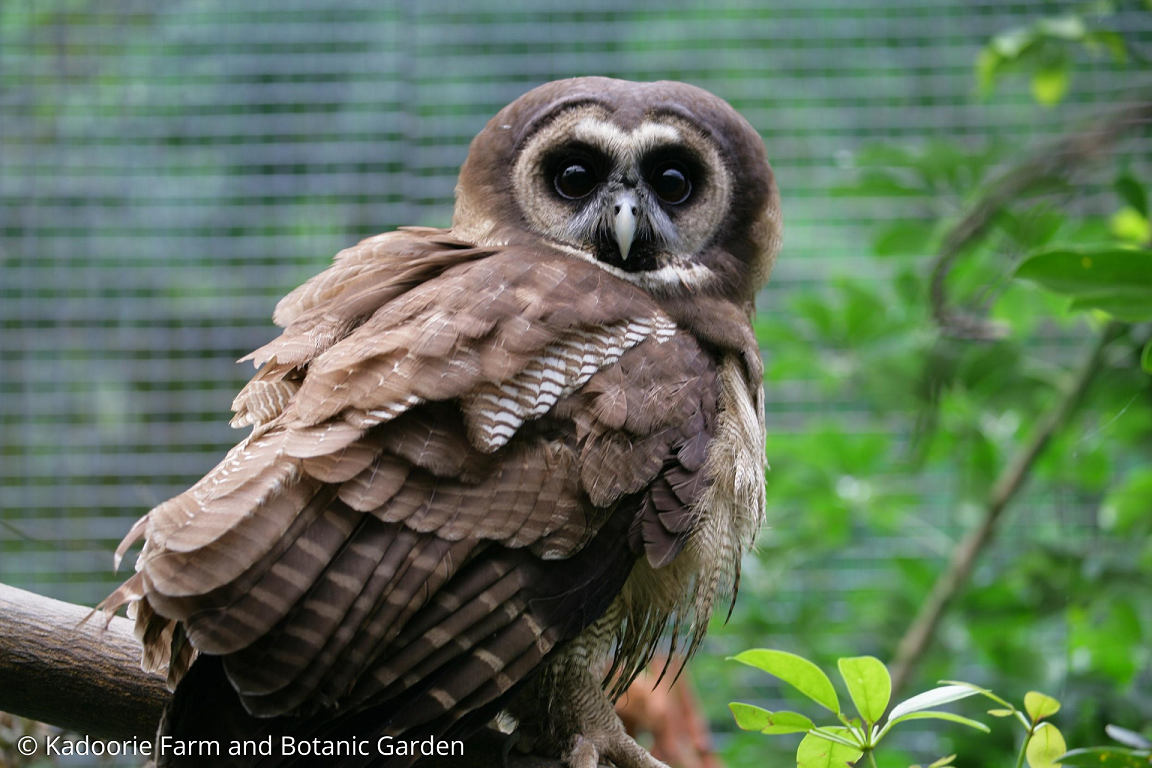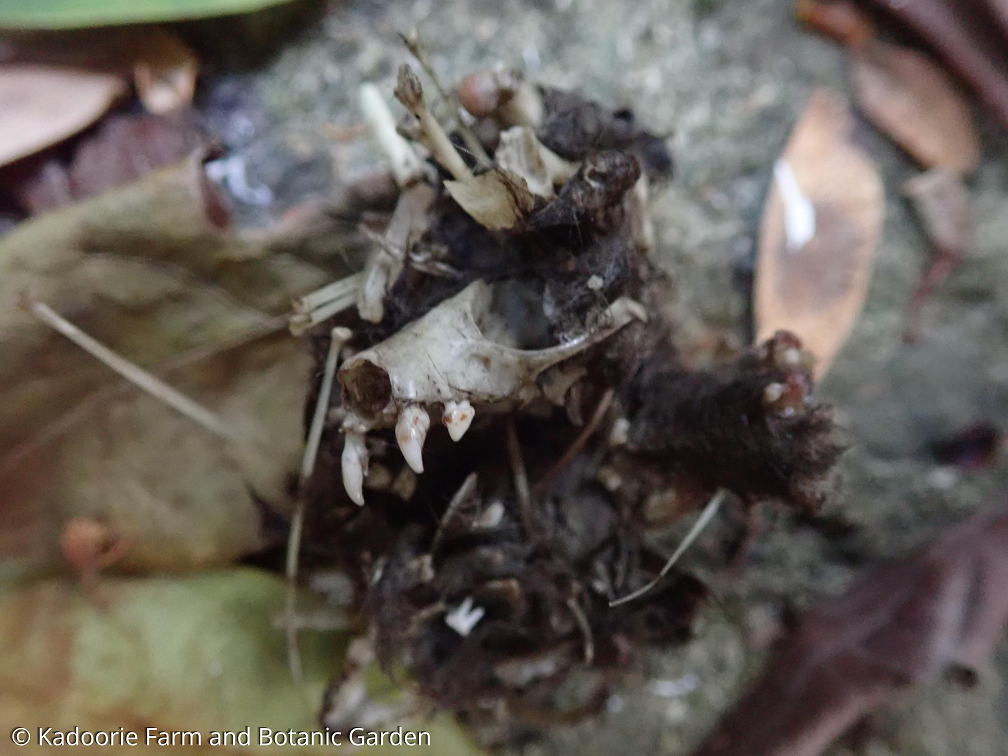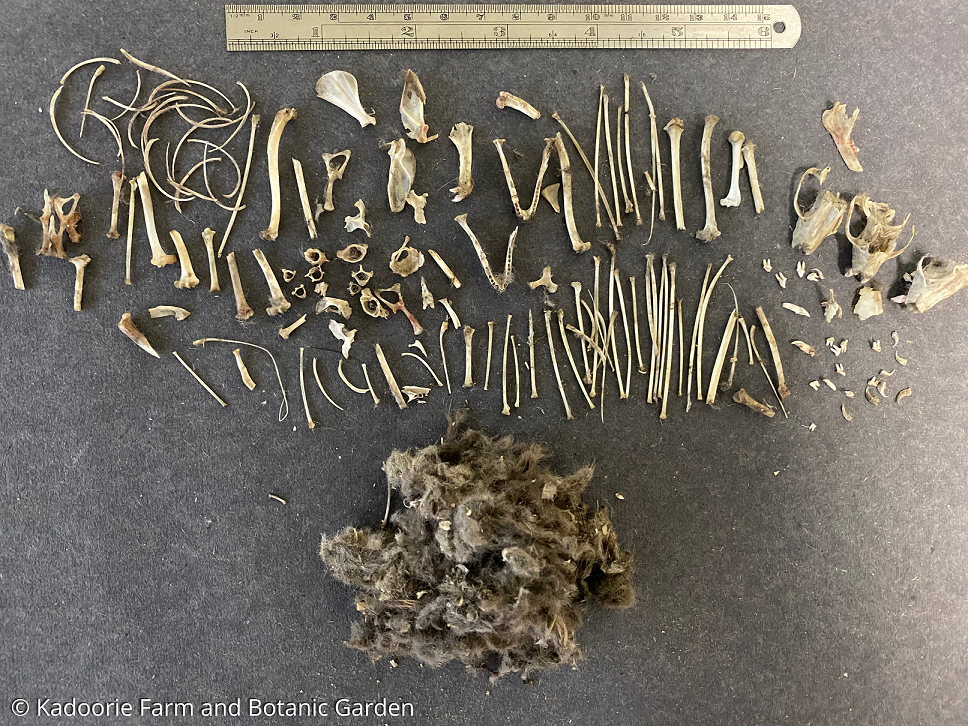What’s on a Brown Wood Owl’s menu?
Brown Wood Owls (Strix leptogrammica) are native to Hong Kong and interestingly are believed to have arrived in the territory only in the last 15 years probably as a result of a natural range expansion from Guangdong Province. This recent occurrence is testament to the quality of woodland habitat now available to such species in Hong Kong. Local naturalists have been interested in what this large recently arrived owl might be feeding on. In March 2020 we were fortunate to gain some insight as an adult owl chose to roost in the same accessible place for just over a week and during this period it was possible to collect several pellets from below the bird. It was probably quite bemused by staff quietly kneeling to remove the discarded pellets from the ground.
Owls typically swallow their prey whole or in large pieces. The indigestible parts such as fur, bones, teeth and feathers are compressed into the form of an owl pellet and regurgitated (coughed up through the beak) after several hours. Scientists can collect these owl pellets to study the owls’ feeding ecology.
Early this year, Prof. Sung Yik Hei, Assistant Professor of Science Unit at Lingnan University, discovered a Brown Wood Owl pellet during an ecological survey at KFBG. Dr Gary Ades, Head of the Fauna Conservation Department, followed Prof. Sung’s direction to the location and removed 4 pellets over a period of nearly two weeks that were discovered below the roosting owl (three have so far been analysed). The location was along a public path above which the adult owl was roosting. Pellets were removed quickly for analysis so as not to disturb the roosting owl.
After dissecting the first owl pellet, Dr Ades was surprised to discover the skulls of three Short-nosed Fruit Bats (Cynopterus sphinx). In the second pellet the bones and fur of two unidentified rat species were found and the third pellet contained the remains of a single Short-nosed Fruit bat. Clearly this would suggest that the owl has a taste for bats. It would be interesting to know how the owl catches the bats, whether it takes them when they are foraging in fruiting trees, in flight or at their roost under the leaves of the Chinese Fan Palm. Little was previously known about the Brown Wood Owl diet. The Hong Kong Bird Watching Society indicated in a 2011 study (below) that because no regurgitated pellets or prey items had yet been recorded, the diet of Brown Wood Owl in Hong Kong remained unknown.
This discovery will hopefully add to our knowledge about the diet of this attractive owl species and provide a clue to its woodland habits
Reference:
Kilburn, M. (2013). The First Breeding Records, Ecology, Status, and Conservation of Brown Wood Owl Strix leptogrammica ticehursti in Hong Kong. Hong Kong Bird Report 2011, 210-233. Retrieved August 3, 2020, from https://www.hkbws.org.hk/web/chi/documents/bird_report/2011_birdreport_protected.pdf

An adult Brown Wood Owl (Photo Credit: KFBG / Tan Kit Sun)

One of three Brown Wood Owl pellets collected from below a temporary roost in early March 2020 (Photo Credit: KFBG / Dr Gary Ades)

Brown Wood Owl pellet containing the undigested fur and bones of three Short-nosed Fruit Bats (Photo Credit: KFBG / Dr Gary Ades)

